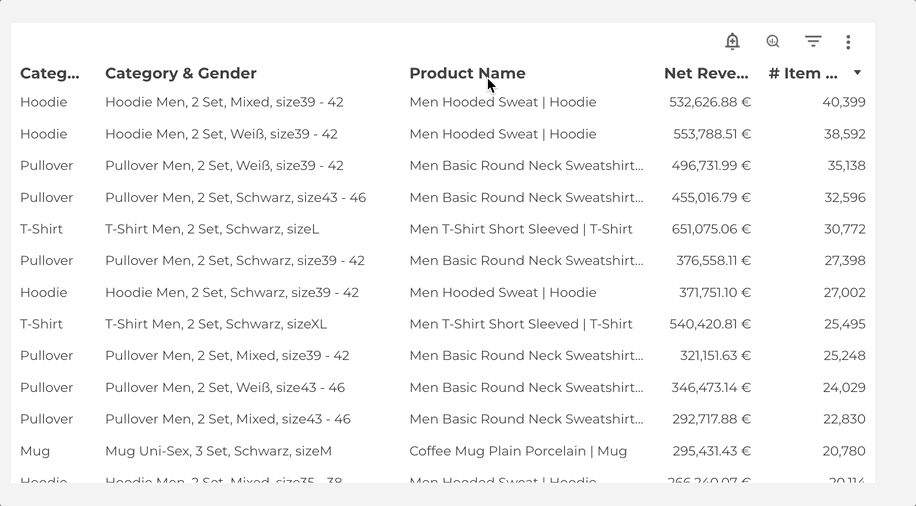
Welcome to the fifth chapter of The Complete 2023 Beginner’s Guide to Power BI. If you’re just starting out with Power BI, we recommend reading the first chapter “ The Complete 2023 Beginner’s Guide to Power BI”, which provides a basic overview of Power BI, including how to connect to data sources, create simple reports, and visualize data. For those looking to master the basics of the DAX language used in Power BI, we recommend checking out our second chapter, “ The Next Power BI Guide with DAX formulas and date tables”.
What you will learn
In this chapter, we'll explore how to turn your Power BI dashboard into a visual masterpiece effortlessly, even if you have no design skills. Canva, a versatile design tool, will be our ally in elevating your Power BI design experience with just a few clicks.
Introduction
Designing Power BI Dashboards can be a challenge with its intricacies, from changing backgrounds to dealing with shapes and themes. However, fear not! We've discovered a game-changing solution: Canva. Let's explore how this tool can make the design process enjoyable and efficient.
Power BI's design intricacies, such as uncooperative shapes and time-consuming text additions, inspired us at datadice to find ways to beautify Power BI dashboards designs. Check out our 6 design tips to create stunning Power BI dashboards if you want to design your Power BI dashboard more efficiently
Creating Background and Theme with Canva
Let's dive into the process of creating a background and theme with Canva.
Step 1: Open Canva.com and create a custom-sized canvas matching your Power BI dashboard page size.
Step 2: Create a custom-size canvas. I am using 1280 width x 900 height. Make sure the canvas size is matching with your Power BI dashboard page size.

To check your Power BI dashboard size:
- Go to Power BI Desktop.
- Click on the page.
- In the visualization pane, click on "Format your page," then "Canvas setting."
- Under type, find your canvas size.

Step 3: After creating your canvas, click on the rectangle shape under the Elements section and add it to the left side.

Step 4: Add a logo on top of the rectangle shape and the text, I’m adding names of the pages of the dashboard.


Step 5: Now that you've laid the foundation, it's time to add your personal touch. Customize each page to match your unique style and preferences.
Here's how you can do it:
Design Each Page: Dive into the details of each page and customize them accordingly. Adjust colors, fonts, and layout to create a cohesive and visually appealing narrative.
Free Access to Page Templates: To make your journey smoother, We are offering free access to the page templates I created. Feel free to utilise these templates to learn and play around with the designs. You can access them here and kickstart your exploration.
Here's a sneak peek at how the design looks. Check out the template here.

Step 6: Once you’ve created all the pages, save these pages as PNG.

Step 7: After saving your PNGs, seamlessly incorporate your Canva designs into Power BI:
- Open Power BI and navigate to the Visualization Pane.
- Format your report page.
- Under Canvas Background, select "Browse."
- Choose your PNG file.
- Adjust transparency to zero.

Congratulations! Your dashboard now boasts a sleek design that's easy on the eyes and user-friendly.
Benefits of Using This Approach
Why use Canva for designing Power BI dashboards background and themes? Here are some compelling reasons:
Ease of Design Modification: Easily revisit Canva to make edits and update your Power BI dashboard background and themes seamlessly.
Effortless Design Changes: Canva simplifies the design modification process, allowing for minor adjustments or complete overhauls.
User-Friendly Interface: Canva's intuitively designed interface makes the entire process smoother and more enjoyable.
In conclusion, this approach using Canva proves significantly more user-friendly than Power BI for designing backgrounds and themes. It provides an easier way to craft stunning Power BI dashboard themes.
Conclusion
Congratulations on completing the fifth chapter of "The Complete 2023 Beginner’s Guide to Power BI"! This chapter has been your gateway to effortlessly transforming data into visually captivating dashboards. By harnessing the simplicity of Canva, we've navigated the challenges of Power BI's design intricacies, making the entire process enjoyable and user-friendly.
Also remember to explore our 6 design tips to create stunning Power BI dashboards and keep an eye on our blog for insights on maintaining your dashboard under the 1 GB limit.
Further Links
This post is part of the Complete Guide to Power BI Data Analytics series from datadice and explains to you every month the newest features of Power BI.
Check out our LinkedIn account, to get insights into our daily working life and get important updates about BigQuery, Data Studio, and marketing analytics
We also started with our own YouTube channel. We talk about important DWH, BigQuery, Data Studio, and many more topics. Check out the channel here.
If you want to learn more about using Google Data Studio and taking it to the next level in combination with BigQuery, check out our Udemy course here.
If you are looking for help setting up a modern and cost-efficient data warehouse or analytical dashboard, email us at hello@datadice.io and we will schedule a call.







